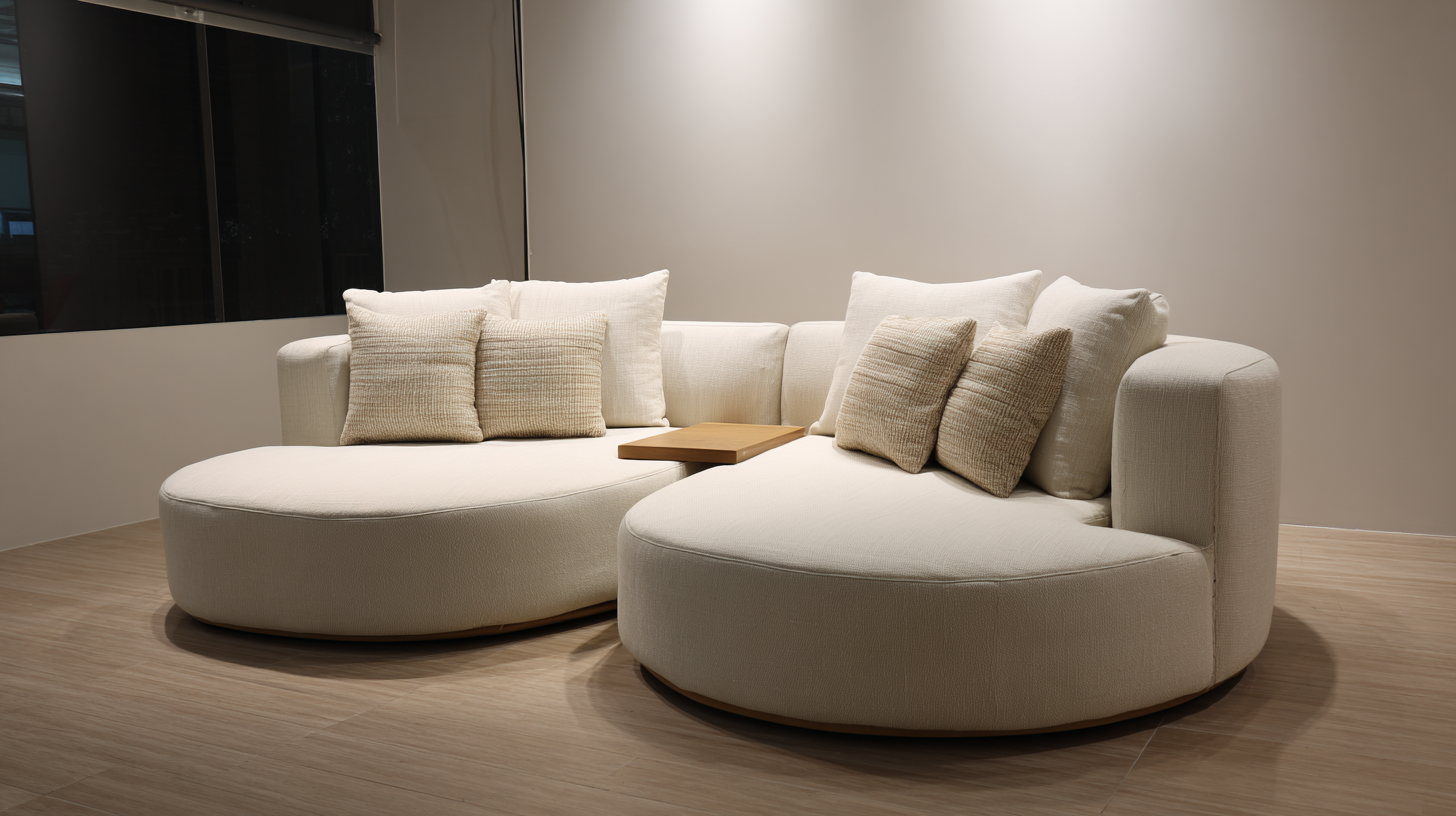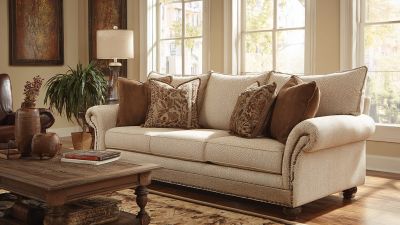In today's fast-paced world, the significance of comfort in our living spaces has never been more pronounced, particularly when it comes to seating solutions like the couch chair. With an increasing number of individuals working from home, the impact of ergonomics on physical well-being has become a focal point for researchers and designers alike. According to a report by the American Chiropractic Association, approximately 80% of Americans will experience back pain at some point in their lives, largely exacerbated by poor seating habits. Ergonomic couch chairs are engineered to provide optimal support and encourage proper posture, mitigating the risks associated with prolonged sitting. As more consumers recognize the value of investing in their health, the demand for innovative couch chair designs continues to grow, paving the way for advancements in comfort and wellness in our everyday lives.

When it comes to designing couch chairs, ergonomics plays a pivotal role in creating a comfortable and supportive seating experience. Understanding key principles such as lumbar support, seat depth, and armrest height can significantly impact how these chairs are perceived and utilized. An ergonomic couch chair is designed to promote a neutral spine alignment, helping to alleviate stress on the lower back. This design consideration is crucial, as bad posture can lead to chronic pain and discomfort over time.
Tips for selecting an ergonomic couch chair include measuring the height of your knees to ensure the seat depth is appropriate, allowing your feet to rest flat on the floor. Look for chairs with adjustable armrests that can accommodate your arm height and provide support without causing strain. Additionally, ensure that the backrest offers adequate lumbar support; this can make a world of difference in maintaining good posture while lounging.
Ultimately, an ergonomic couch chair is not just a piece of furniture but a vital ally for your health. By focusing on these fundamental design elements, you can choose a chair that contributes positively to your overall well-being, enhancing both comfort and posture as you relax.
The role of materials in enhancing comfort and posture support in ergonomic couch chairs is crucial for overall well-being. High-quality materials such as memory foam, gel-infused cushions, and breathable fabrics are designed to contour to the body's unique shape, providing tailored support. Memory foam, in particular, responds to body heat and weight, distributing pressure evenly and reducing discomfort during prolonged sitting. This technology not only enhances comfort but also encourages proper spinal alignment, which is essential for maintaining good posture.

Furthermore, the choice of upholstery can significantly affect one’s experience. Fabrics that are both durable and soft can facilitate a comfortable seating experience, while also allowing for air circulation to prevent overheating. Natural materials, like cotton or wool, often provide greater breathability compared to synthetic options, promoting a more pleasant seating environment. Additionally, supportive frames constructed from materials like hardwood or metal offer stability and durability, further contributing to the ergonomic benefits of the chair. By integrating these thoughtful material choices, ergonomic couch chairs not only revolutionize comfort but also play a vital role in posture enhancement and long-term health.
Ergonomic couch chairs have emerged as a pivotal solution for addressing prevalent issues related to back pain and strain, primarily caused by poor posture during prolonged sitting. Unlike conventional seating, ergonomic chairs are meticulously designed to support the natural curvature of the spine, which helps distribute body weight evenly. This design feature reduces undue pressure on specific areas, such as the lumbar region, thus alleviating chronic pain often exacerbated by extended periods of inactivity.
Furthermore, research indicates that using ergonomic chairs can lead to improved posture over time. These chairs encourage a more upright seating position, which not only enhances comfort but also promotes better breathing and circulation. A well-aligned torso can significantly decrease the likelihood of developing musculoskeletal disorders, making ergonomic seating not just a luxury, but a necessary investment for overall health and well-being. In an era when many individuals spend hours seated, integrating ergonomic designs into everyday furniture is a step toward fostering a healthier lifestyle.
| Feature | Description | Benefit | Impact on Health |
|---|---|---|---|
| Lumbar Support | Designed to support the lower back | Promotes proper spine alignment | Reduces risk of back pain |
| Adjustable Features | Customizable height and angle settings | Allows for personalized comfort | Minimizes strain on neck and shoulders |
| Seat Depth | Ergonomically designed for optimal seating depth | Enhances leg support | Improves circulation and reduces fatigue |
| Material | Breathable and high-density foam | Increases comfort for long seating periods | Decreases muscle strain and discomfort |
| Recline Feature | Allows for adjustable reclining positions | Promotes relaxation and comfort | Reduces pressure on the spine |
As the demand for comfort and support in furniture design rises, ergonomic couch chairs are increasingly being recognized for their significant impact on user posture and overall well-being. Recent surveys indicate that over 70% of consumers reported improvement in their back pain after switching to ergonomic chairs, underscoring the importance of design grounded in biomechanical research. A study published in the Journal of Ergonomics found that proper lumbar support can reduce slouching by 43%, enhancing comfort during extended periods of sitting.

Consumers also highlight the crucial connection between ergonomic features and user experience. Many have noted that adjustable armrests and customizable seat heights not only promote better posture but also allow for personalized comfort. According to a recent report by the American Furniture Manufacturers Association, 65% of users would recommend ergonomic couch chairs to friends and family, citing long-term health benefits and enhanced relaxation.
Tips for Selecting an Ergonomic Couch Chair:
- Look for chairs with adjustable features to accommodate your unique body shape and size.
- Prioritize lumbar support that aligns with the natural curve of your spine for maximum comfort.
- Consider materials and cushioning that can provide both durability and a comfortable sitting experience while ensuring airflow to prevent overheating.
As modern living spaces evolve, the importance of ergonomics in furniture design continues to rise. With the upcoming spoga+gafa exhibition in Cologne scheduled for June 24-26, 2025, the spotlight will be on innovations that redefine outdoor living and comfort. Ergonomic couch chairs, designed to support healthy posture and provide optimal comfort, are key elements in this transformation. The integration of advanced materials and smart technologies not only enhances user experience but also addresses the growing concern of maintaining proper posture in both indoor and outdoor settings.
Future trends in ergonomic design are likely to focus on versatility and adaptability. As living spaces become more multifunctional, furniture must not only serve aesthetic purposes but also cater to the health and comfort needs of users. Innovations in design will incorporate elements such as adjustable seating, breathable fabrics, and environmentally sustainable materials. These changes will redefine how we interact with our surroundings, making comfort a fundamental aspect of modern living.
The spoga+gafa event will certainly present an array of groundbreaking ideas that fuse comfort, style, and functionality, paving the way for a more ergonomic future in our homes and gardens.





